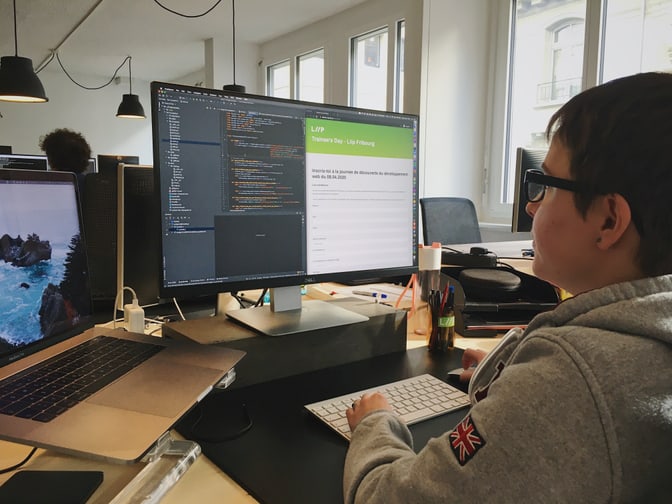Multiple times a year, we – the Liip apprentices at the Fribourg office – organise discovery days to give the young people who are interested in this apprenticeship more information about what a career as a computer scientist or developer involves.
Managing the registrations for the discovery days was not a quick task. My colleagues taking care of this needed a solution that would save them time.
We wanted to find an intelligent solution to this problem. As a computer science apprentice, I therefore set about creating a website that would meet this need.
The website had two objectives. First, to allow participants to sign up directly on the website. Second, to help my colleagues manage the registrations using a unique interface.
One of the first steps was to choose which technology to use. I opted for Django and Python as I had mainly worked with PHP until this point and wanted to learn something new. Django has the advantage of having very comprehensive official documentation, which helped me a great deal with this project.
One of my colleagues took on the role of the client in order to validate the project and its functionality during the development process. The fact that we work in the same office ensured seamless communication throughout the project. It was very practical. I could also make a lot of progress very quickly.
I work with a backlog, a tool that allows me to select the task I would like to work on while still following the client's priorities. When I ran into difficulties, I started by consulting the relevant documentation. If this didn't help clarify the matter, I then turned to the person training me or other colleagues who were familiar with the technology. I could always select another task from the list to work on while I was waiting for the other issue to be resolved.
For the production environment, I chose to use Heroku because it is easy to use and set up. This enabled me to focus more on the content than the infrastructure.


